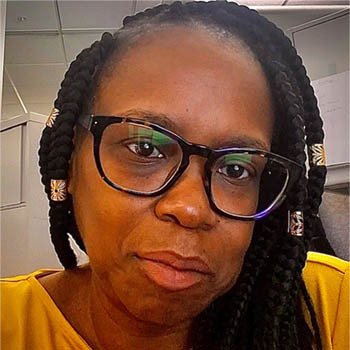Getting To Know You
We don’t have time to process everything we see, so our brain creates mental shortcuts based on our values and experiences. These mental shortcuts are often unconscious biases.
Unconscious bias – about age, race, sex and sexual orientation, just to name a few – are split-second judgments that we might not even realize we’re making; and once we do realize what’s happening, these biases can become difficult to overcome. Unconscious bias can determine choices about who we work with, how we work together, who gets opportunities (and who doesn’t), and how we handle challenging situations.
One way to reroute our brains is through the experience of curiosity, finding ways to learn about and understand people who are different from us. The challenge is, this is so much harder to do when we are not together.
If I didn’t know you before, it’s much harder to get to know you now. That matters in my job as a diversity talent recruiter and as a team member. The lack of face-to-face exposure or even an opportunity to be among diverse groups can make us feel more isolated and less included. It takes more work and more awareness to feel connected and to get to know our candidates (and for our candidates to get to know us).
We continue to carry our assumptions and biases unchallenged.
Why This Matters
Most of us – at work, socially, in our neighborhood – have at some time felt like we did not belong. When we feel this way, we are less engaged. If it’s a work setting, we might be less productive.
While one way to improve the feelings of inclusion is to get to know people, many of us remain remote, relying on video conferencing to talk with our colleagues.
Tips for Reducing Bias in a Virtual World
Our team is working hard to get comfortable, be transparent in our intentions and challenges, honor and respect our differences– and lead by example.
In this virtual world, you can take action now to promote and support diversity and inclusion, influence employee values and attitudes, create connections and create a culture where people feel like they belong. You can:
- Get curious about your biases and be intentional about your actions. Our goal is to raise awareness of the impact and value of differences and group dynamics in all of our interactions; and understand and remove barriers in everyday interactions.
- Challenge assumptions. Do not make decisions based on what you think you know. Work to understand each person. This seems easy but it’s not, because of how our brains are wired. The goal is to reduce bias, unconscious or not.
- Schedule catch-up time and allow a few minutes to build rapport. If an in-person meeting would have started with five minutes of chat, then start your virtual meeting the same way. Start with something that gives everyone a chance to learn about each other. Encourage people to share stories and ask questions. Remember that for some, being in an office reduced isolation.
- Reach out to people who may feel isolated. Speaking of isolation, let’s work to reduce that feeling. Vary the time of day of your meetings and calls to accommodate different time zones and family obligations.
The Little Things Really Matter
Inclusion is too important to allow it to diminish in a virtual world. Are you modeling these values and behaviors? Are you practicing inclusion, and advocating for others who are not having the same experience? Are you challenging your assumptions?
Becoming more aware of your unconscious biases is the first step toward defeating that way of thinking, and to becoming a more inclusive and engaged leader and colleague. And in the end, we all win when there is diversity… even in a virtual world.
To help you on your journey here are a few free resources:
- The Harvard Implicit Association Test (IAT) is a tool that allows you to discover hidden cognitive biases.
- Howard Ross webinar based on is book "Our Search for Belonging: How our need to connect is tearing us apart."



